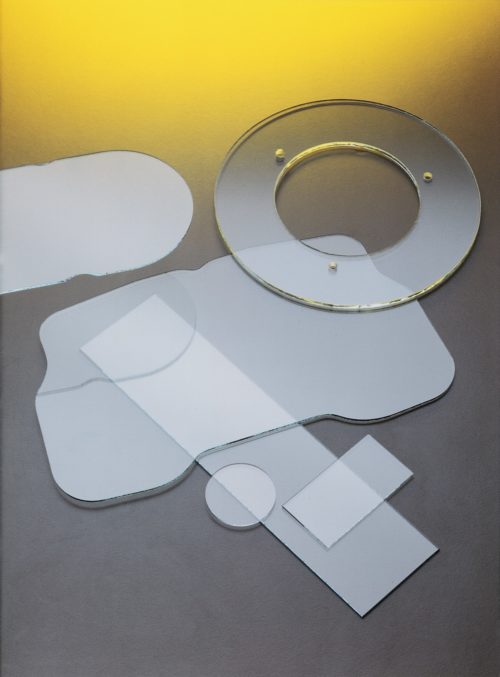Glass Surface Lapping vs. Polishing
Lapping and polishing are surface treatment options that can make machined parts smoother and safer to handle. However, both processes offer distinct advantages, and choosing the right one can make a big impact on your next glass product order. Learn more about glass surface lapping, the difference between lapping and polishing, and key industrial applications of lapping.
What Is Lapping?: The Lapping Process
For a lapping surface finish, the glass workpiece is smoothed using a lapping tool. An abrasive product — such as silicon carbide, aluminum oxide, or jeweler’s rouge — will sit between the two surfaces, and, as the surfaces rub together, the abrasives will smooth down the workpiece surface. In most processes, the lapping tool will rotate and equipment will press the glass workpiece against that rotating plate.
Lapping can be used to transform glass workpieces into parts with particular shapes, dimensions, and thicknesses. It can also remove damaged portions that experienced too much stress or incorrect shaping earlier in the manufacturing process. The lapping tool itself can also vary. Some processes use a roughened lapping tool that has a fixed abrasive, while others use loose abrasive powder sitting between the two surfaces.
This process does not rely on heat, so it won’t generate heat stress on the workpiece. Instead, it relies on abrasives to remove excess material, ensuring a consistent result across the workpiece. Because this process can be fine-tuned to meet the needs of fragile and finely crafted pieces such as ceramics and glass, it can be used with a wide variety of both metal and non-metal workpieces.
What Is the Difference Between Lapping and Polishing?
Lapping and polishing are two popular smoothing options, but they have very different processes that provide different results. While lapping relies on physical abrasion to finish the surface of the components, glass polishing uses a chemical process. Electrolytic polishing uses an electrical charge to remove excess material. Polishing processes can be either single-sided, which focuses on one side of the piece at a time and can create pieces with differently shaped and polished sides, or double-sided, which treats both faces of a workpiece at the same time.
In many manufacturing workflows, lapping can be done to leave a product with a smooth, unpolished surface, or the product can undergo lapping and then polishing to achieve a smoother finish.
Main Industrial Applications
Some of the industries that rely on glass surface lapping and polishing for highly precise glass products include the following:
- Aerospace and aviation
- Automotive
- Energy
- Lighting
- Marine
- Medical
- Military and government
- Optical
- Petrochemical
- Semiconductor
Glass Lapping and Polishing Information From Swift Glass
High-quality glass lapping and polishing processes are essential for developing highly sensitive or very precise glass objects. At Swift Glass, our team specializes in fabricating custom glass components. Our company is ISO 9001:2015 certified, and our products and processes are built to comply with both MIL-SPEC standards and ASTM standards. We handle production from glass cutting to final polishing and shipping, and we’ve been a leading provider of custom glass services for nearly 100 years.
Contact Our Experts for Premium Glass Fabrication Solutions
When you need a high-quality supplier who can manage your glass products from start to finish, contact the experts at Swift Glass. Reach out today to learn more about our extensive capabilities or request a quote to start your custom order.





